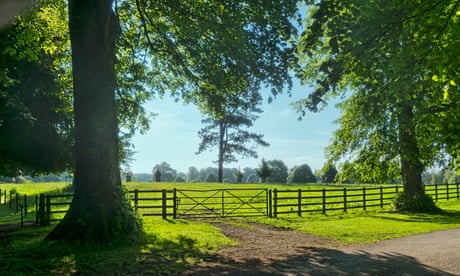
England’s most stunning “national landscapes” are largely out of bounds, and 22 of the 34 have less than 10% of their area open to the public, research has found.
The government last year renamed areas of outstanding natural beauty to national landscapes, and said part of their aim was to widen access to nature. Ministers said at the time the new name reflected a recognition that they are not just beautiful but important for many reasons including improving wellbeing.
The National Landscape Association, a government-organised body representing national landscapes and their conservation boards, advertise that “they are the UK’s nearby countryside – 66% of people in England (44 million) live within 30 minutes of a national landscape and at least 170 million people visit them every year”.
However, new research by the Right to Roam campaign has found that only a tiny fraction of most of these beautiful areas are freely accessible for walking and other forms of outdoor recreation.
Most of the national landscapes have poorer footpath access than the average across all of England, despite their stated importance as a gateway to nature. Across England, the average footpath density is approximately 2km of public rights of way per sq km. Twenty-two of the 33 national landscapes in England have a lower than the national average density of public rights of way, and six of these have under 1km of paths per sq km.
Just 1.2% of the Cotswolds is designated as access land, making it one of the worst national landscapes for access. Protesters will descend on Cirencester Park in the Cotswolds this weekend for a mass trespass after the owners started charging for entry to the green space. The loss of free access to the park equates to a reduction of more than a third of the freely accessible land in the Cotswolds, from 4,000 hectares (9,884 acres) to 2,500 hectares.
Areas of outstanding natural beauty were designated around the time national parks were created in the mid-20th century. They were formed because their beauty was deemed important to preserve, but they were either not large or not wild enough to be considered a national park. Some of the most well-known ones are the Chiltern Hills, Norfolk coast, Mendip Hills and Wye Valley.
Some national landscapes only have a tiny area open to the public under the Countryside and Rights of Way Act, such as the Lincolnshire Wolds, which only have seven hectares available. Others have vastly more; in the North Pennines 126,267 hectares are open to the public for roaming.
England, Northern Ireland and Wales all have limited access in the countryside for the public to roam. Scotland has a right to roam across its countryside as long as people are respectful and leave no trace of activity or disturb farmland.
Caroline Lucas, the Green MP for Brighton Pavilion, has previously tabled a right to roam bill in the House of Commons, asking for expanded access to woodlands and the green belt. It has not passed through parliament and is unlikely to as a private member’s bill without the support of either the government or the larger opposition parties.
She said: “Access to nature is vital for both our physical and mental health, so it is unhealthy, unfair and unacceptable that so much of the beautiful British countryside is off limits to the vast majority of people.
“Any government that was serious about improving our national health and wellbeing would act with urgency to ensure everyone has a legal and comprehensive right to roam and enjoy the natural world around us.”
Lewis Winks from the Right to Roam campaign added: “It’s startling that some of our most celebrated landscapes are largely out of bounds, yet this is simply illustrative of our broken access system in England.
“When our so-called ‘nearby countryside’ is inaccessible it acts as a pertinent reminder that access reform must go beyond being defined by land use, and instead focus on connectivity and clarity.
“Our current exclusion-by-default model is woefully confusing and inadequate. Instead, a presumed right of access with sensible justified exclusions – as we see in Scotland and Scandinavia – would provide the antecedent conditions for people to feel a sense of connectedness and belonging, underpinned by an access system which offers welcome rather than disdain.”